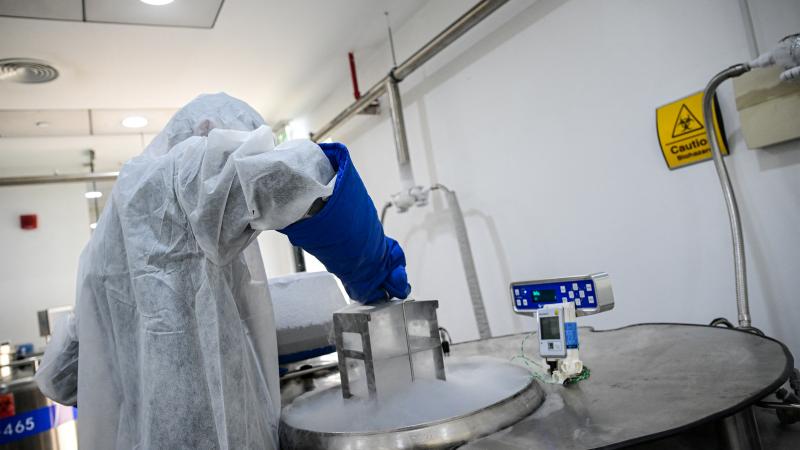As beef takes beating from environmentalists, data suggest cows can actually fight climate change
Pastured livestock may contribute to "carbon sink" effect on grasslands.
Criticism of the beef industry this past week was thrust to the forefront of the U.S. political stage when the cooking brand Epicurious announced that it would no longer publish new beef-based recipes as part of "an effort to encourage more sustainable cooking."
Long a target of environmentalists due to its purported negative effects on the global environment, cattle farming has lately been pilloried by eco-activists for its alleged hastening of warming across the planet due to the high levels of greenhouse gasses that the industry produces every year.
Yet a relatively small but growing body of research suggests that certain types of cattle farming— namely, those in which cows are raised on pastures for their whole lives as opposed to in feedlots — may actually have a carbon-negative effect on the environment by helping to sequester greenhouse grasses under well-managed grasslands.
The vast majority of beef produced in the U.S. is sourced in feedlots in which cattle are fed primarily corn and grains, a diet which hastens their fattening and prepares them for slaughter much earlier than traditional methods.
Environmentalists have criticized those systems as ecologically ruinous due to their heavy carbon footprints, citing in part their dependence on chemically fertilized cattle feed and the copious amounts of methane that cows emit in the form of burps and flatulence.
The Washington Post, meanwhile, claimed recently that "science says beef should be on the chopping block" due to beef's "significant role in greenhouse gas emissions." And the Atlantic deemed beef the "main, mooing offender" driving livestock greenhouse gas emissions, with writer Annie Lowrey declaring that "trading your rib eyes and cheesesteaks for lentils and tofu is one of the best things you can do as a consumer for the environment."
Pastured livestock has different environmental profile
Yet other activists have pointed to a much smaller segment of the beef market as a possible answer to the conundrum of beef's carbon footprint: Pasture-raised beef, in which cattle are raised on grasslands from birth to slaughter.
Grass-fed beef still commands a very small fraction of the overall beef market. One 2017 estimate put it at just 4% of total U.S. beef sales. The relative scarcity of pastured beef, as well as its considerably heftier price tag, has kept it from gaining much of a foothold in the mammoth American meat economy, which in 2019 saw $111 billion in beef production.
Still, growing interest in pastured beef — spurred on by an explosive growth in farmers markets around the country over the past decade — has led to a steady rise in the product's visibility, with major corporations and even fast food chains such as Arby's seeking to capitalize on the niche market.
Alongside that growth has come a still-small but steady series of investigations looking into the environmental outcomes of pastured cattle operations. In many cases scientists have found that grass-fed beef farms can actually have a net-carbon-negative effect on environmental emissions.
One 2018 study by researchers in Michigan and Washington, D.C. applied "life cycle analysis" to "two different beef finishing systems in the Upper Midwest," one grass-fed and one feedlot-finished. The scientists found that intensive, rotational grazing "has the potential to offset [greenhouse gas] emissions through soil [carbon] sequestration, and therefore the finishing phase could be a net [carbon] sink."
Grasses, the researchers noted, can be highly efficient carbon sequesters. That sequestration "is a critical ecosystem service of grasslands," they write, a natural phenomenon "which can be maximized using best management practices for livestock grazing."
Another study, published last December, reviewed a "multispecies pasture rotation" in the southeastern United States that incorporated multiple species of livestock including cattle. The authors of that study note that feedlot beef are more efficient at "gaining more weight in less time," thus producing less total greenhouse gas emissions over their lifespan; however, the sequestration effects of the multispecies pastured rotation ultimately "reduced the [greenhouse gas] footprint of the [pastured] system by 80% ... ultimately finishing at 66% lower than comparative [feedlot] production."
Both studies noted a pointed downside to pastured systems: Pastured farms require considerably more land to produce beef compared to the more compact feedlot systems.
Other researchers have come to different conclusions regarding the environmental feasibility of pastured beef. A 2017 study by the Food Climate Research Network argued that the potential offsets of worldwide grazing systems would only effect between 0.6-1.6% of yearly greenhouse gas emissions, “to which of course livestock also substantially contribute," the network noted.
Still other advocates have expressed considerably ambitious goals for pastured farming. The Savory Institute, an ecological advocacy group that promotes what it calls Holistic Planned Grazing, says that that grazing method has "the potential to remove the excess atmospheric carbon that has been the result of both anthropogenic soil loss over the past 10,000 years and industrial-era greenhouse gas emissions."
"This sequestration potential, when applied to up to 5 billion hectares of degraded grassland soils, could return 10 or more gigatons of excess atmospheric carbon to the terrestrial sink annually thereby lowering greenhouse gas concentrations to pre-industrial levels in a matter of decades," the institute claims.
Regardless of the potential environmental benefits or downsides, one thing that may pose an insurmountable deterrent for many consumers is pastured beef's price: Average ground beef prices in U.S. cities in March were about $4 per pound, while grass-fed ground beef often runs twice as much as that or more.
Beef prices across the industry spiked last year due in part to the effects of coronavirus restrictions and processing woes amid the pandemic.














